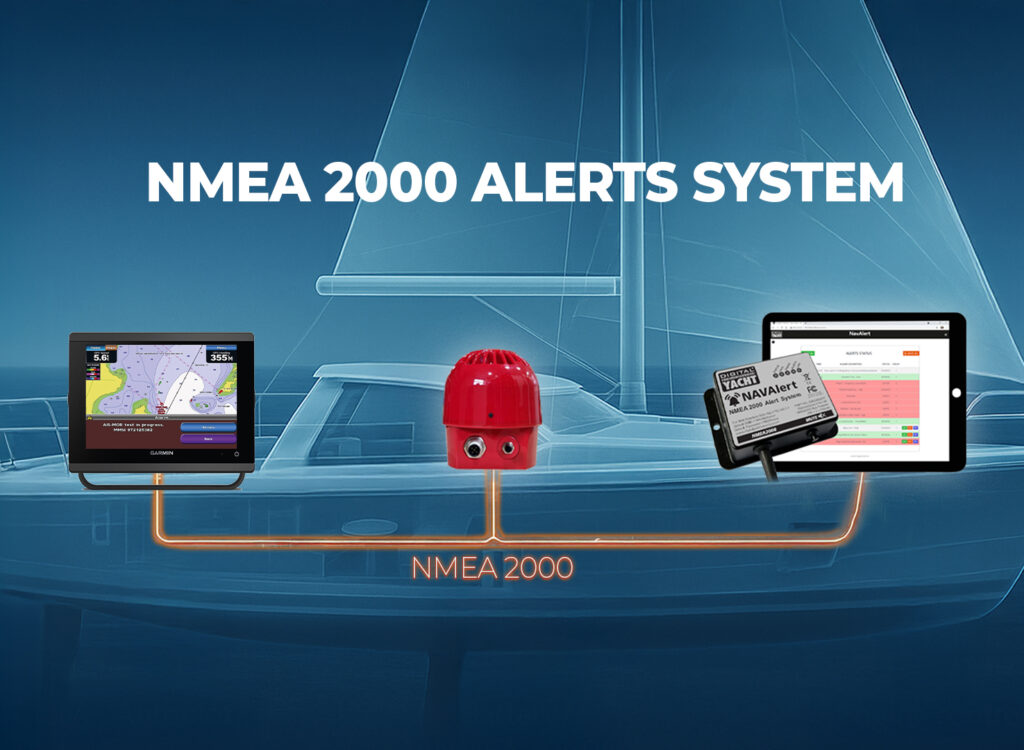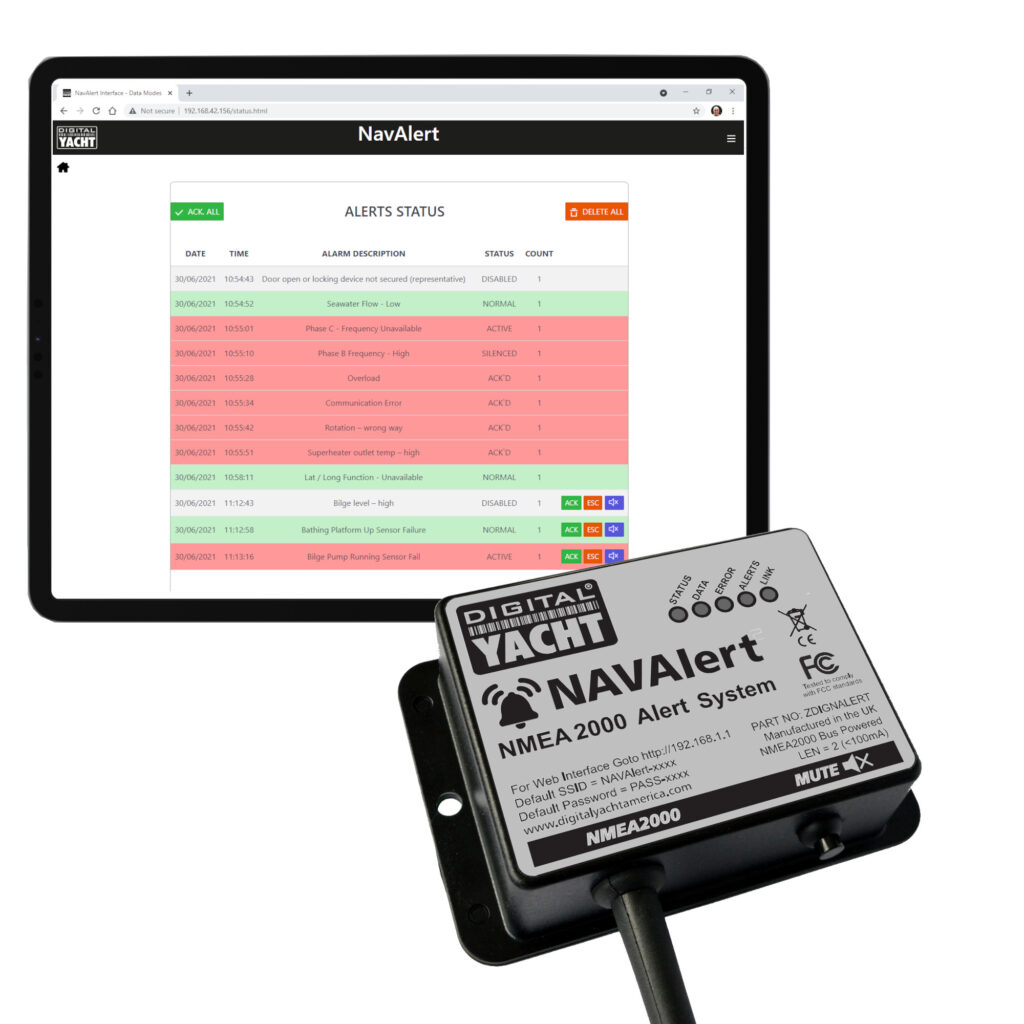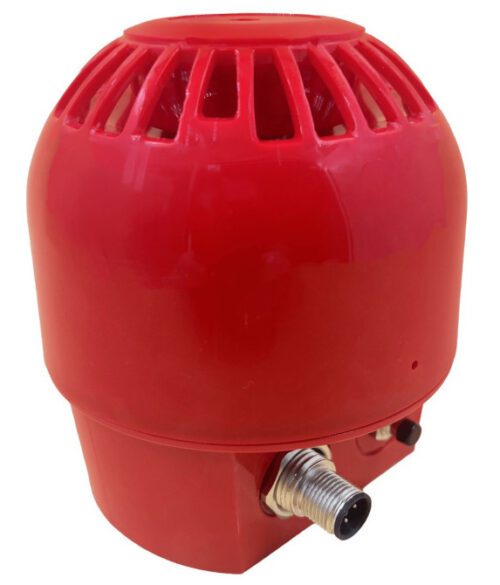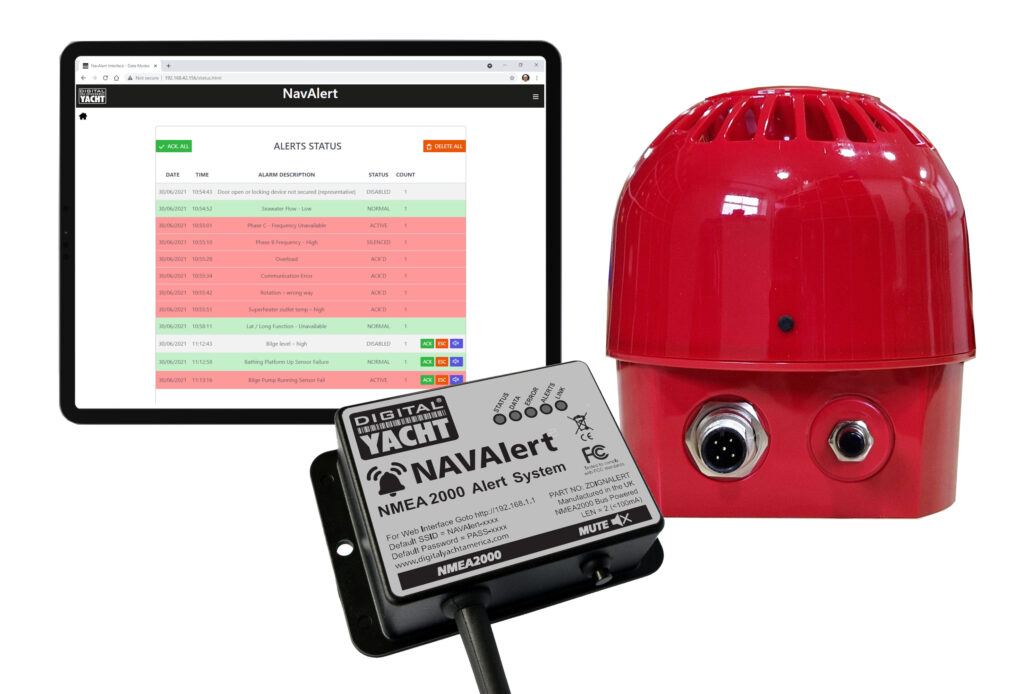
The Crucial Role of NMEA 2000 Alerts
The modern vessel relies on a network of interconnected electronic devices to manage everything from navigation to engine performance. The NMEA 2000 standard—a robust, high-speed communication protocol—is the backbone of this integration, allowing devices from different manufacturers to share data seamlessly using standardized messages known as Parameter Group Numbers (PGNs).
While NMEA 2000 excels at data sharing, its true power for safety is unlocked through the official NMEA 2000 Alert PGNs (126983-126988). These dedicated messages standardize the process of raising and managing alarms across the entire vessel network.
The importance of NMEA 2000 Alerts cannot be overstated, as they directly contribute to safer and more efficient boating by providing:
- Universal Compatibility: Alerts generated by one device (e.g., an engine monitor) are instantly and uniformly understood by all compatible display devices (Multi-Function Displays or MFDs) on the network, regardless of the manufacturer. This ensures critical warnings are never missed.
- Real-Time Intervention: By standardizing and prioritizing alarms, the system enables prompt crew response to emerging issues, whether it’s a sudden drop in oil pressure, a high bilge level, or a shallow depth warning.
- Centralized Awareness: Instead of relying on proprietary displays, a single, integrated network view allows the crew to see the status of all monitored parameters and acknowledge alarms from a central location.
- Future-Proof Monitoring: The Alert PGNs were designed to be flexible, supporting both standard alerts and custom, manufacturer-specific conditions, ensuring the monitoring system can adapt to new sensors and technologies.
Building a Sophisticated Alarm Monitoring System with Digital Yacht
While many devices generate NMEA 2000 data, not all are designed to monitor and generate the official NMEA 2000 Alert PGNs, nor do they often provide a centralized, easy-to-configure hub for all warnings. This is where Digital Yacht’s NAVAlert and NAVAlarm create a powerful, sophisticated, and comprehensive monitoring solution.
NAVAlert: The Intelligent Monitoring Hub

The NAVAlert is a dedicated NMEA 2000 monitor and alert solution that transforms raw network data into actionable safety warnings. It connects directly to the NMEA 2000 backbone and monitors all available data—including depth, speed, heading, voltage, tank levels, and engine parameters—allowing the user to set custom alert thresholds for any PGN on the network.
Key Features that Create a Sophisticated System:
- Universal Alarm Configuration: Through a simple, browser-based Wi-Fi interface (accessible via any smartphone, tablet, or PC), users can easily define minimum, maximum, or exact trigger levels for virtually any NMEA 2000 parameter. This flexibility allows for an alarm system tailored to the specific needs of the vessel.
- Advanced Safety Alarms: NAVAlert’s, built-in algorithms for critical scenarios:
- Anchor Drift Alarm: Uses GPS data with an intelligent algorithm factoring in boat length, depth, and chain scope to calculate an optimal alarm radius for reliable notifications, minimizing false alarms while ensuring prompt warning of anchor drag.
- AIS Collision Alarm: Monitors AIS data to set alerts based on Closest Point of Approach (CPA) and Time to Closest Point of Approach (TCPA), providing an independent collision warning system.
- Independent and Remote Alerting:
- Independence: Crucially, NAVAlert operates independently of the main Multi-Function Display (MFD). This allows the alarm system to remain active even if the MFD is turned off, which is vital for power-limited cruising or off-watch periods.
- Remote Monitoring: When integrated with a Digital Yacht 4G/5G connectivity solution (such as the 4G Xtream), NAVAlert can generate an SMS message when an alert is triggered, enabling remote monitoring of the vessel’s status—perfect for checking on the anchor while ashore or monitoring a boat left at the dock.
- Standardized Output: Once an alarm condition is met, NAVAlert transmits the official NMEA 2000 Alert PGN (126983), ensuring the warning is displayed on any compatible MFD (such as those from Garmin that support Alert PGN pop-ups) and universally recognized by other network devices.
NAVAlarm: The High-Decibel Audible Alert

The NAVAlarm is the essential physical component that ensures alerts are heard. It is an ultra-loud (102dB), NMEA 2000-powered sounder designed to respond specifically to the Alert PGNs transmitted by devices like NAVAlert.
Integration Benefits:
- Guaranteed Audible Warning: With an output rating comparable to a nearby jet, the NAVAlarm cuts through engine noise or deep sleep, guaranteeing the crew is alerted to a critical event.
- Universal Alarm Response: It acts as a dedicated, universal NMEA 2000 buzzer. Any device on the network that transmits a standard Alert PGN will trigger the NAVAlarm, including external systems like Digital Yacht’s CO Alert or MOB Alert devices.
- MOB Priority Alert: NAVAlarm is programmed to sound a distinct, louder tone upon receiving an AIS MOB PGN or a dedicated MOB PGN, ensuring immediate, unmistakable recognition of a Man Overboard emergency.
- Acknowledge and Silence Functionality: The NAVAlarm, along with the NAVAlert unit, features a local silence/reset switch, allowing the crew to silence the audible warning while the alert condition is investigated and formally acknowledged via the NAVAlert web interface.
Conclusion

The evolution of marine electronics demands a dedicated and sophisticated approach to onboard safety. By fully embracing the power of NMEA 2000 Alert PGNs, Digital Yacht’s NAVAlert and NAVAlarm combination provides a crucial layer of security beyond standard MFD alarms.
This integrated solution offers:
- Comprehensive Monitoring of virtually every parameter on the NMEA 2000 network.
- Intelligent Safety Features like advanced anchor and collision alarms.
- Universal Compatibility with other NMEA 2000 systems.
- Guaranteed Audible and Visual Alerting through the NAVAlarm and MFD integration.
- Remote Notification via SMS for peace of mind while away from the vessel.
For any boater or system integrator looking to create a truly sophisticated and fail-safe alarm monitoring system, the Digital Yacht NAVAlert and NAVAlarm are the essential core components that maximize the safety potential inherent in the NMEA 2000 standard.






